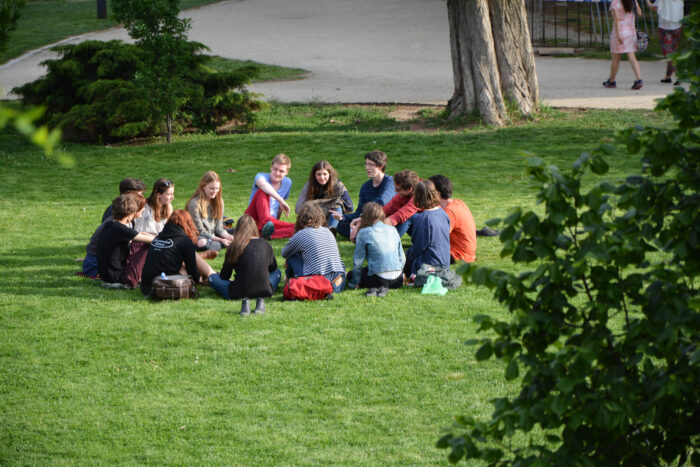- What We Do
- Understanding your audience
- Engaging new audiences
- Designing experiences
- Building loyalty


Eco mindsets is a new psychographic profiling system that helps cause led organisations understand what drives people to act for the environment, and what they can do to encourage greater action in future.

Why use segmentation?
Engagement with environmental issues is complex and nuanced. The messages that motivate some, terrify others. Anger could be a great catalyst for action, or a quick route to paralysis.
If we had limitless resource, we’d tailor communications, products and services to every individual based on the unique trigger points that would drive them to take action on behalf of the planet.

But practicality is paramount
Of course, we don’t have limitless resource. Yet without some degree of differentiation, we run the risk of treating everyone the same. Which is at best ineffective, and at worst, counterproductive.

Segmentation is the pragmatic, strategic solution
Segmentation is the process of creating groups of people with shared needs. This provides a structure for reaching and affecting current and potential supporters that is affordable, useful and usable.
Eco Mindsets is the segmentation system designed by MHM specifically to meet the needs of cause led organisations in promoting wider, deeper, and more constructive engagement with their cause. Ultimately, we want people to receive the messaging that will enable and empower them to play their part in the climate crisis.
What makes Eco-Mindsets different?

As applicable to the wider population as it is to your supporters
Eco Mindsets is a universal system, based on universal, human values and mindsets. For this reason, it works when segmenting the general population, as well as those who engage with what you do. Its scope ranges from those at the forefront of change, to those who don’t have the capacity for engagement with environmental messaging, and everyone in-between. Crucially it addresses why these people sit where they do on the spectrum of engagement. And how we might change that.

Designed specifically to meet the needs of organisations led by their cause and values
There is more than one way you can segment people. The most obvious way is to divide people by their demographics – their age, origin or socio-economic profile. This is certainly useful to know whether someone has the spare income for donating or paying extra for organic produce. But often pro environmental approaches are also cost effective. They don’t require money, but they do require compromise or effort. Meaning that that there are few linear relationships with lifestyle, income or age when it comes to making the effort for the environment.
Other attempts at environmental segmentation have been designed for the profit making sector. They’ve been focused on increasing engagement with a brand or fuel consumption of goods and services. Eco Mindsets is designed with behavioural science as its engine. The focus on how to increase pro-environmental behaviours means that it’s designed specifically with the needs (and budgets) of cause-led environmental organisations in mind.
Meet the segments

Change-makers
Change-makers are the most engaged and active of the mindsets when it comes to the environment. They’re strongly connected to the natural world, as well as being empathetic and highly confident in their ability to create change.

Conscientious collaborators
Conscientious collaborators have have low personal agency scores, but show up strongly in their collective contribution, and are highly empathetic. They’re enthusiastic for community action, donate generously, but do much less in their personal environmental behaviours.

Justice defenders
Justice-defenders care about the environment, and share a wider concern for the people around the world who are vulnerable to climate change. They’re young, diverse, left-leaning, eco-anxious, empathetic and keen to make a difference.

Nature enthusiasts
Nature-enthusiasts are emotionally driven and motivated by a love of animals and the natural environment they enjoy spending time in. They believe their actions make a difference, and have a high sense of responsibility.
Waste watchers
Waste-watchers have a strong sense that their actions can make a difference, and they’re big on personal pro-environmental behaviours. They favour activities that reduce waste, and if it also saves them money: all the better.

Uncompromising consumers
Despite average empathy and collective contribution scores, Uncompromising consumers’ low environmental concern combined with their enthusiasm for the free market and individualism means they have little interest in taking action for the environment, or legislation to encourage others.

Anxious escapists
Anxious escapists care very much about the climate, and understand the scale of the environmental challenge, but also undertake very few mitigating behaviours. They are a mindset who believes they’re not, personally, doing enough, and need more reassurance and support.

Disinterested disengagers
Disinterested disengagers show a general lack of personal agency, sense of community, empathy and environmental responsibility when compared to most other mindsets.
Find out more
Learn moreEarthwatch: How Eco Mindsets unlocked their potential
Earthwatch asked MHM to provide stakeholder insight that would support their work: they wanted to understand what would inspire pro-environmental behaviour change amongst their potential supporters.
Learn more4 key takeaways from the Market Research Society’s Sustainability Summit
What can the cultural sector learn from the consumer research taking place elsewhere? Consultant Laura Karban attended the Sustainability Summit late last year with that question in mind. She's summarised four takeaways and the implications for museums, galleries and heritage organisations
Learn moreCultural organisations as agents of environmental change
Many of MHM's culture and heritage clients have been looking to move along the spectrum of engagement from voices of authority towards a model of co-creation with respective communities. Here are 5 tips for your organisation that we have gathered from our recent research around engaging with community sustainability.
Learn moreUsing eco-capital to change behaviour webinar
Join Consultant Laura Karban as she shares insights on how better understanding visitors' drivers around the environment can help us create meaningful communications and experiences that avoid contributing to generic green messaging and refresh audiences' curiosity for environmental issues.
Add your details below
Interested in finding out more?
Get in touch with our experts to find out how we can bring Eco Mindsets insights to your organisation.
- Engaging new audiences
- Understanding your audience



